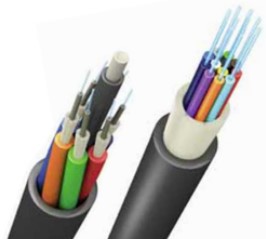Drop Cables
In today’s digital age, seamless connectivity is vital for homes and businesses alike. One crucial component that enables this connectivity is drop cables. In this guest post, we will explore the significance of, their role in modern communication networks, and their impact on our daily lives.
Section 1: Understanding :
Begin by defining and their purpose. Explain that are specially designed cables used to connect the main distribution network to individual premises. Highlight their importance in providing internet, television, and telephone services directly to homes and businesses.
Section 2: Types :
Discuss the various types of available in the market. Mention coaxial cables, fiber optic cables, and twisted pair cables. Explain the unique characteristics and advantages of each type, such as the high bandwidth of fiber optic cables or the versatility of coaxial cables.
Section 3: Installation and Configuration:
Detail the installation process for drop cables, emphasizing the importance of proper installation techniques. Discuss factors to consider, such as cable routing, termination, and weatherproofing. Highlight the need for professional installation to ensure optimal performance and durability.
Section 4: Benefits and Applications:
Explore the benefits of using drop cables in different scenarios. Discuss how drop cables enable high-speed internet access, reliable television broadcasting, and clear telephone communication. Highlight their role in supporting smart home devices, video streaming services, and online gaming.
Drop cables play a pivotal role in various applications, including residential, commercial, and industrial settings. They enable high-speed internet access, allowing users to stream videos, browse the web, and engage in online activities seamlessly. Drop cables also facilitate reliable television broadcasting, ensuring crystal-clear picture quality and a wide range of channels. In addition, they enable clear and uninterrupted telephone communication, supporting both traditional and VoIP (Voice over Internet Protocol) services.
Section 5: Future Trends and Advancements:
Discuss emerging trends and advancements in drop cable technology. Mention the increasing demand for higher bandwidth to support emerging technologies like 5G and Internet of Things (IoT). Briefly touch on advancements in cable materials, improved signal quality, and enhanced durability.
The demand for faster and more reliable connectivity continues to grow, driving advancements in drop cable technology. As technologies such as 5G, Internet of Things (IoT), and smart homes gain prominence, drop cables are evolving to meet these requirements. Advancements in materials, signal processing, and transmission techniques are being explored to enhance bandwidth, reduce latency, and improve overall performance.
Section 6: Maintenance and Troubleshooting:
Provide insights into the maintenance requirements of drop cables. Explain the importance of periodic inspections, cable testing, and preventive measures. Offer tips for troubleshooting common issues, such as signal loss or connectivity problems.
Regular maintenance is essential to ensure the longevity and optimal performance of drop cables. Periodic inspections, cable testing, and preventive measures can help identify and address potential issues before they escalate. In case of troubleshooting, understanding common problems such as signal degradation, damaged connectors, or cable faults can assist in resolving issues promptly.
Conclusion:
Summarize the key points discussed in the article, emphasizing the critical role of drop cables in enabling seamless connectivity. Emphasize how have revolutionized communication and transformed our digital experiences. Conclude by highlighting the ongoing advancements in drop cable technology and the promising future they hold for enhanced connectivity.



